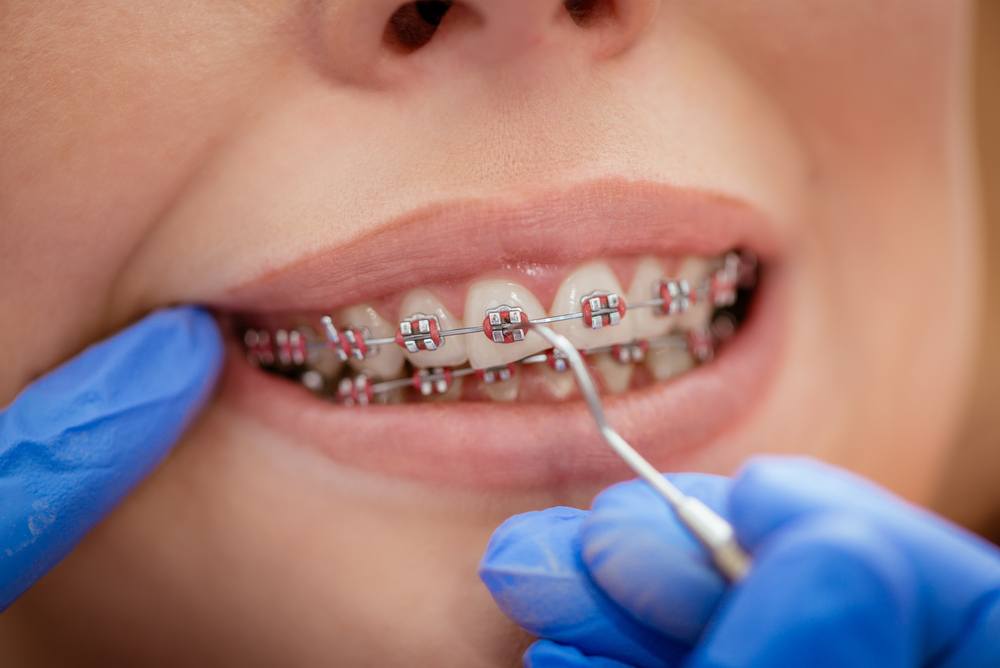Comprehensive Guide to Orthodontics Treatments for Correcting Dental Misalignments
Comprehending the ins and outs of each procedure, including their systems, advantages, and potential drawbacks, is important in making notified decisions regarding one's orthodontic treatment. As we browse via the comprehensive guide to orthodontic treatments for dealing with oral misalignments, the detailed details of each method will unfold, losing light on the course toward a harmonious and functional oral positioning.
Orthodontic Procedures Review

Routine adjustments and tracking are essential components of orthodontic therapy to make sure progression is on track and to make any needed adjustments along the method. By undertaking orthodontic procedures, individuals can not just attain a straighter grin but also enhance their general dental wellness and feature.
Conventional Dental Braces: How They Work
When thinking about orthodontic treatments for oral imbalances, conventional dental braces stand out as a reliable approach for correcting teeth placing. Standard braces contain braces, cables, and bands that interact to use continuous stress on the teeth, gradually moving them right into the preferred positioning. The braces are affixed to the teeth making use of a special adhesive, and the wires are threaded with the brackets. By readjusting the tension of the cables, orthodontists can manage the direction and pressure applied to each tooth, leading them into correct alignment with time.
As pressure is used to the teeth through the dental braces, the bone surrounding the teeth is reshaped to support the new tooth settings. Individuals will need normal changes at the orthodontist's office to guarantee the braces continue to use the correct pressure for efficient teeth activity.
Unnoticeable Aligners: Cons and pros
These clear, custom-made trays are virtually unseen when used, making them an enticing alternative for people looking for an extra visually pleasing orthodontic treatment. Clients can remove the aligners before eating or cleaning their teeth, lowering the danger of food getting stuck in the device and simplifying the cleaning process.

Surgical Orthodontic Options
Surgical interventions in orthodontics present viable options for attending to intricate oral misalignments that may not be successfully settled via traditional orthodontic treatments. While standard dental braces and unseen aligners can fix numerous orthodontic issues, certain cases call for medical treatment to attain optimum outcomes. Surgical orthodontic choices are normally suggested for serious malocclusions, considerable jaw inconsistencies, and situations where the underlying bone framework requires adjustment to achieve proper alignment.
One usual medical orthodontic procedure is orthognathic surgical treatment, which includes repositioning the jaws to correct useful problems such as difficulty eating or talking. This surgery is commonly done in cooperation with an orthodontist who helps straighten the teeth before and after the procedure. Surgical orthodontics might likewise involve treatments to subject impacted teeth, remove excess periodontal cells, or reshape the jawbone to develop a much more unified facial account.
Before considering medical orthodontic choices, patients undertake a thorough assessment to determine the need and potential advantages of such interventions. cumming orthodontics. While surgical treatment might seem difficult, it can considerably boost both the function and aesthetics of the smile in situations where conventional orthodontic treatments fail
Retainers and Post-Treatment Care

Failing to abide with post-treatment treatment directions can result in regression, where the teeth gradually move back in the direction of their initial placements. Regular retainer wear, excellent dental hygiene, and routine dental check-ups are necessary for preserving the outcomes attained via orthodontic surgical procedure and making certain the lasting stability of the corrected oral placement.
Verdict
In conclusion, orthodontic treatments supply numerous choices for dealing with oral misalignments. Surgical orthodontic options are available for more extreme misalignments. Generally, orthodontic procedures can effectively enhance dental health and wellness and visual appearance.
As we browse with the comprehensive guide to orthodontic procedures for correcting oral imbalances, the detailed information of each Home Page approach will certainly unravel, losing light on the path toward a practical and unified dental placement. - cumming orthodontist
One of the most usual orthodontic treatments is the use of dental braces, which consist of steel brackets and cords that use mild stress to progressively move teeth right into the preferred setting.When thinking about orthodontic therapies for dental misalignments, conventional dental braces stand out as a tried and true method for correcting teeth positioning. Additionally, undetectable aligners may not be appropriate for complicated orthodontic problems that call for more considerable teeth movement, as they are commonly recommended for mild to moderate instances. Retainers are personalized orthodontic tools made to dentist description hold teeth in their corrected placements after the completion of orthodontic therapy.